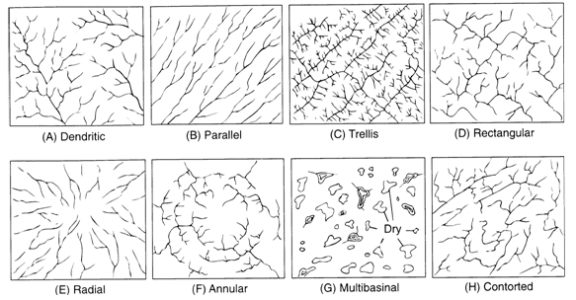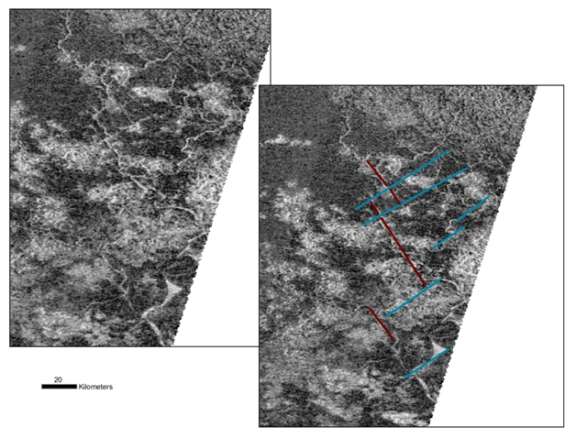Emily Lakdawalla • Jun 11, 2010
Titan's rivers are square
There's a new "planetary gromorphology image of the month" posted at the International Association of Geomorphologists' Planetary Geomorphology Working Group page, and it's a cool post about the shapes of the river networks on Titan. As I did for their previous image of the month feature, I'm going to shamelessly copy its content, translating it from academese. The original was written by Devon Burr and her student Sarah Drummond, of the University of Tennessee, Knoxville, and Robert Jacobsen, a senior undergrad at Colorado College (cool!)
Rectilinear Fluvial Networks on Titan
(or, Titan's rivers are strangely straight)
For all its alienness, Titan's surface is surprisingly similar to Earth's. Both are large, solid worlds with a substantial nitrogen-rich atmosphere; and both atmospheres contain a special substance, amounting to a few percent of the atmosphere, that is near its triple point, meaning that it can exist at the surface as a solid, liquid, and gas simultaneously. Of course, there's an important difference between Earth's and Titan's "special substances" -- ours is water, while much colder Titan's is methane. But in both cases, the special substance evaporates, accumulates in the atmosphere, and then can condense and fall to the ground where it runs off, following the local downhill gradient, into rivers and seas.
Evidence for river networks on Titan has been found by both Huygens and Cassini, particularly in Cassini's radar images. Here's the classic view from Huygens:

The shapes of river networks aren't random. They go downhill, of course, and where exactly downhill lies is often a sensitive probe into what's going on underground. Earth geologists have long used the shapes of river networks to learn about the structure of subsurface rocks; the image below is from a 1967 summary of using drainage analysis to interpret subsurface geology. (These kinds of studies have been applied to Mars, too.)

Here are some examples of rectangular networks on Titan.

Here's a bit more of the T13 radar swath, if you'd like to hunt for more structurally controlled river segments on your own:

Here's another set, from a different part of Titan:

Rectilinear networks indicate that there are underground tectonic features like joints or faults in Titan's crust. Now, the existence of parallel joints and faults in an icy moon like Titan is not really a surprise; just look at its neighbors Rhea and Tethys, or Jupiter's moons Ganymede and Europa and you'll see icy moons are usually heavily fractured. But it's been desperately hard to see through Titan's atmosphere and its heavily modified surface materials to see firm evidence for similar fractures; the rectangular drainage patterns are really a smoking gun for subsurface fractures, suggesting that, underneath the atmosphere and the rivers and lakes and dunes, Titan really does look like those other icy moons.
The Time is Now.
As a Planetary Defender, you’re part of our mission to decrease the risk of Earth being hit by an asteroid or comet.
Donate Today

 Explore Worlds
Explore Worlds Find Life
Find Life Defend Earth
Defend Earth

